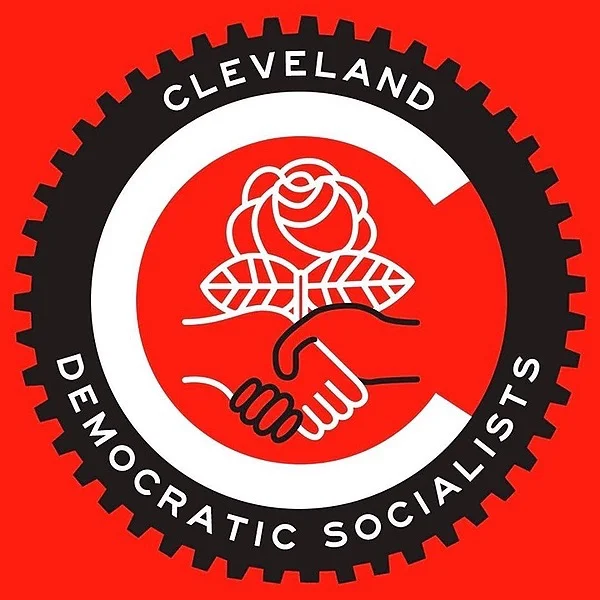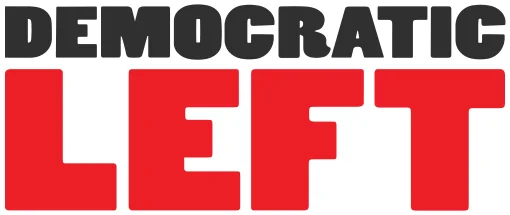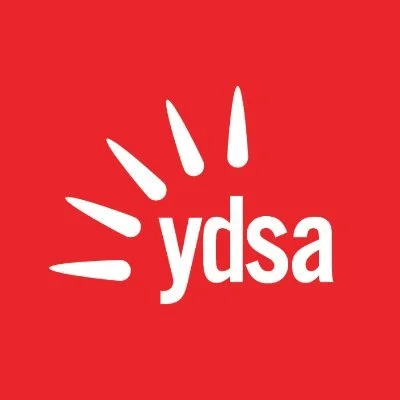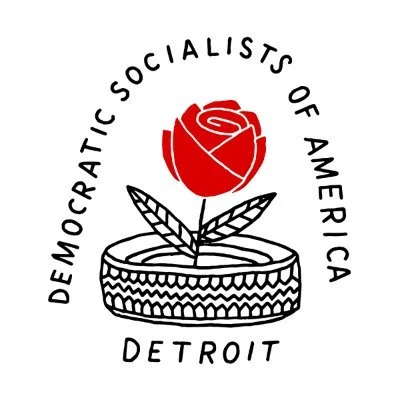

Theory and Individual Politics in a Collective Movement
Author: Andrew O.
“Theory” may be the most misused and misunderstood term on the left today. The popular understanding of theory, as simply things written in books, is deeply harmful to our movement. This understanding leaves the impression that theory is an object locked behind the elitist walls of academia, to be known of and kept only by those with the training and time to learn it. Frequently, this idea becomes an insistence that action is superior to theory, rather than the two not only being inseparable, but actually being one in the same.
This faux-debate seeks to make a distinction where none exists. Engaging with this debate at all limits our ability to organize and blinds us to the ways in which theory and action inform one another. When we give preference to action and minimize theory, we may occasionally hit on something that works, but we will have a limited understanding of why it worked or if it will work again in the future. On the other hand, preferencing theory and minimizing action limits our ability to effect change on the world around us. We must instead build a theoretical framework of the world to instruct our actions. This is essential to participating in a socialist movement.
All of us have an instinctual understanding of action or “the work”. It can take many forms, whether canvassing, protesting, writing proposals, debating and deliberating, doing turnout, organizing mutual aid, the list could go on forever. This “instinct” is actually a theoretical understanding of our world. Theory is simply the way we connect our abstract ideas of the world with our concrete reality so we can hold an understanding of it within our heads. We use our theoretical framework of the world to build our personal politics. When we analyze this theoretical basis for our worldview, we are able to give greater strategic reasoning and direction to our work and actions. If our personal politics are the house we build out of our ideas, theory is the foundation we build our house on.
To ensure our foundation is strong, it should be constantly inspected, analyzed, critiqued, and updated both by ourselves and via discussions and arguments with our comrades. Each of us are perfectly capable of building and writing our own theory–our own understanding of the world–by living within it, but that doesn’t mean we need to start from scratch. Many great political theorists have done the heavy lifting already. We should study their work critically, rejecting some elements, and embracing others. In a very real way we can place our own ideas into debate with theoretical giants like Marx, Lenin, Gramsci, Luxemburg, Nkrumah, and countless others.
Reading theoretical texts from those who came before us will allow us to build our own method of analyzing the world. With practice, we can more easily and readily share our understanding and politics with others. Our theoretical frameworks will not and cannot identically reflect anyone else’s. Each of us has lived a wholly unique life. It is our responsibility as socialists to build our own political theories and drive ourselves, our organization, and our movement forward. We, as socialists, must seek to politicize all of our decisions, particularly those within DSA.
It is up to each of us to ensure theory is not the arena of academics, dead socialists, or our nerdiest friends. Many people have written theory, and many of those theories are good, important, and relevant today. However, most theory ever written was not widely read or remembered. It is not impossible to write theory, I am doing so right now. In fact, it is a certainty that I am writing ideas that have already been written and shared.
Academics and nerds are not the arbiter of theory, much less of your own theory of politics. For our movement to win, theory cannot be used to gatekeep the movement. You do not have to have read any specific work to enter debate. Rather, you are responsible for doing what each of the great theorists have done before; you must analyze the world around you. No one will hand us a map to socialism, we must draft our own by constructing our own personal theoretical framework for our politics. This can, of course, be made easier by reading the writing of those that came before us.
The second major flaw with the understanding of theory within our movement are our methods of teaching and learning. The too common and dismissive refrain of “read theory” leads us to believe that we should go read a boring and difficult book by ourselves. Frustratingly, this is frequently what a person telling us to “read theory” means. This sort of attitude is unacceptable. To put it bluntly, you cannot learn theory this way. This is not a critique of your intelligence, rather, this is a comment on the reality of what theory means to the socialist movement. We all bring unique perspectives, catch different things, and we all benefit from sharing these perspectives with each other. Collective action is a strength to us in all aspects of our movement. We should not limit ourselves in this area by learning individually. Collective and mutual political education is socialist education.
So is the answer then to read with as many comrades as possible? In the long term, yes! But, if we try to introduce too many people into one reading group, we find many pitfalls. It is great to get a lot of passionate people in a room, but the discussion, debate, and deliberation suffer from the necessity to get in line to speak in groups this large. Conversation, explanation, and deliberation become confusing, disjointed, and ultimately counterproductive. Worse, if it is not well organized, it turns into a lecture where the most vocal people dominate the discussion to the exclusion of all others.
Instead, we should read with many small and varied groups of comrades. We open the ability for free flowing discussion and debate. This will give us the best opportunity to understand and digest the texts we have read. This method still is not perfect, and while free flowing conversations and arguments are great for learning, they can still be monopolized by the most confident and opinionated people in the group. As socialists, we must ensure that everyone is able to participate as much as they are willing and able. It is our collective responsibility to redirect conversation towards people who are seeking to speak, and to give space for everyone’s ideas to be heard. This is hard to do and takes constant practice and reflection to achieve. Even with these pitfalls, small discussion groups are the best method for reading and learning theory.
Socialists were able to learn, teach, and argue about theory when the literacy rate within the United States was under 70%. One third of labor organizers in this period (and likely much more) were unable to read. Still, they were able to build personal politics and deep understandings of political theory. Reading together and arguing about books helps us build our own theories and politics through having to listen to other perspectives as well as having to sharpen our own arguments. It is more engaging and more fruitful than a lecture can be, and it keeps us more accountable and engaged than reading alone will.
We are all already forming and applying theory whether or not we realize it. We have all read theory, and have been inundated with liberal theory for our entire lives. What is important now is to analyze our own theoretical frameworks, our own politics, and ask why we believe what we do, how we got here, and if our frameworks are still accurate and useful to who we are and where we want to go.
There is not a difference between building your theoretical frameworks and your personal politics. Your politics are downstream of your theoretical base, and they will be built, changed, and updated simultaneously. This is not a process that can or should be completed, we should always be working to learn and update our theories and politics as often as we are able. There is no shame in being wrong. Learning, growing, and changing our minds are all parts of engaging in politics, and engaging in the world.
We should not seek to create identical political theories or politics. It is not possible and it would hinder our movement. We must, instead, find ways to resolve these differences through principled and good faith debate. As long as everyone is accurately and honestly representing their viewpoints and perspectives, we should be able to engage in debate regarding ideas, actions, and arguments with anyone. “Good faith” simply means we have all come to the table with honesty and integrity. Being dishonest about the why behind your argument is just as destructive and harmful as any other dishonesty to our movement. The concern about honesty within our debates is not just high-minded idealism. Dishonesty functionally and materially holds back our ability to make decisions, learn, and grow as individuals and as a collective movement. Debate, discussion, and deliberation will build our movement and is just as much action as canvassing or protesting.
As socialists, we seek to make every person a leader in the movement. If we are organizing effectively, the movement will not notice if we need to take a break or step away temporarily. As a result, all people within a socialist movement must be an active participant within building democracy whether that is our chapter, the national organization, or in the broader world. Finding the direction of our movements and our actions, finding the common ground between our personal politics, and finding the principles we must uphold are only possible through debate.
It is imperative for each person in the socialist movement to build their own understanding of theory and their personal politics. It is equally important to build our movement via debate and deliberation with our comrades. We are not individualists. We are a collective movement of individuals. If the working class is to build itself into a class ready to lead itself, into the worker class, we must all take the responsibility to build our theoretical framework, our personal politics, and to build each other into these leaders.
The views expressed in this article are the author’s own and do not necessarily reflect those of DSA Cleveland as a whole.
The post Theory and Individual Politics in a Collective Movement appeared first on Democratic Socialists of America.


Election Victories Across U.S., Socialist Caucus Coming to Minneapolis and More
Chapter and Verse: a Summary of Chapter News for November 2025
The post Election Victories Across U.S., Socialist Caucus Coming to Minneapolis and More appeared first on Democratic Left.

The Road to Working Class Power: Permanent Revolution and the Proletarian State
A clear, accessible walkthrough of Marx, Engels, and Trotsky’s theory of permanent revolution, this piece explains why the working class must dismantle the capitalist state and build a new commune-state to achieve true emancipation and, ultimately, a classless society. Illustration of the Paris Commune adapted from the century edition of Cassell’s History of England, (ca.…
The post The Road to Working Class Power: Permanent Revolution and the Proletarian State appeared first on YDSA.


Immigrant Solidarity Priority Project
Author: Barbie A
Day in and day out, more and more people are disappearing off of the streets of our communities. From migrants going in for routine immigration check ins and being detained, being targeted in traffic stops, being sought out on their way to work, or out right having their paperwork revoked from them and hunted down like animals. All across the United States, including here in Cleveland, people who call this place their home are having their lives destroyed by the racist and inhumane Trump administration. A country that once guaranteed safety and sanctuary is now trapped within a shifting system in which anyone could find themselves entangled with ICE or DHS, including U.S. citizens.
Living in the most diverse country in the world, with a long history of immigration, racism, colonization, imperialism, and injustice, as democratic socialist, it is our duty to show up for the marginalized groups of our community and stand up against fascism. During Trump’s campaign for presidency there was a lot of talk about expanding ICE operations and abilities to go after criminals, or “the worst of the worst” as he put it. For those of us familiar with the immigration system and the terminology around immigration, we understood clearly that they were going to use this opportunity of power to abuse their authority and go after undocumented migrants, child U.S. citizens, and various documented legal immigrants. A majority of immigrants who are undocumented did not come into the United States without being vetted first. Most immigrants enter the United States with legal status and end up falling out of status because of expiring paperwork, financial barriers, changes in their life situations, or for most it being that they do not have a legal way to obtain permanent residency or citizenship from the status they do have.
For example, those with temporary protected status (TPS), and people with other statuses of immigration, do not have a pathway to citizenship despite being legal documented migrants who must obey the law, pay taxes, and are excluded from social welfare, unemployment, social security benefits, and other rights afforded to US citizens. In most cases of immigration the only way to obtain citizenship is by being sponsored for a green card by an employer or by marrying a U.S. citizen. TPS holders and others are having their paperwork revoked or denied under the Trump administration. Migrants come to the United States seeking refuge and they have created lives with families, jobs, homes, businesses, and more, and yet they could lose everything they have paid and sacrificed for because this administration would rather punish the innocent than negotiate fair immigration reform. Migrants being deported who have U.S. born children have to decide between figuring out living situations for their kids here in the United States or bringing them to the countries where the parents are from but are of no familiarity to the children. This disenfranchises child U.S. citizens from having access to medical care, education, food, and many more opportunities.
We are watching the Trump administration abuse their power. The escalation is something we must be prepared for as we know anti-immigrant agencies have been rewarded $170 billion dollars via the “One Big Beautiful Bill Act.”. It’s imperative that all people in our country and region understand their rights under the constitution and what they’re lawfully protected to exercise.
So far we have seen Donald Trump use executive orders to try to revoke birthright citizenship (14th amendment) from people. We have seen the attacks on the fifth amendment by blatantly denying people their rights to due process, including denying people their rights to a fair hearing, to challenge deportation, or to their rights to challenge their unlawful detention (habeas corpus). Regardless of any person’s status they’re guaranteed the rights to the first amendment, in which we have seen the invasion of these protections and discriminatory practices used to target people for their rights to freedom of speech, rights to protest, rights to assemble, rights to petition the government, freedom of press, and the freedom to practice whatever religion they choose. Across the country we have also seen an overwhelming amount of evidence showing violations of the fourth amendment, which protects all people from themselves and their personal belongings illegally being searched or seized without a judicial signed warrant that would prove that there is substantial evidence to have this protection breached.
Recently the Supreme court has ruled (6-3) in favor of Noem (Kristi Noem) v. Vasquez Perdomo, in which it allows for racial profiling and discrimination. This opens the door to allowing immigration, and other enforcement, to violate the rights of all people. Agents are now permitted to bother people based on their appearance and ethnicity, language and accent, location and occupation, and other suspicionless stops. This has led to the arrests of U.S. citizens who are being treated inhumanely and having their rights violated. Cleveland DSA has vowed to commit to helping prepare the community and support immigrants during these turbulent times.
Cleveland DSA’s mission with our immigrant solidarity priority project is to show up for the communities of people who are many times forgotten about. Through preparation of our comrades to take part in our rapid response network, building and participating in extensive coalition efforts in greater Cleveland and surrounding areas, and showing up to support our communities in courtrooms, check ins, their places of employment or business, worship, and social activities; we want to meet people where they’re at and show them our commitment to justice and solidarity.
First we will start by preparing all comrades through various know your rights (KYR) training so that they can help our community to observe and document people’s interactions with Immigration and Customs Enforcement (ICE), U.S. Customs and Border Patrol (CBP), Department of Homeland Security (DHS), and/or local law enforcement. When our chapter is prepared we will begin canvassing through Greater Cleveland’s businesses and organizations, churches, and public spaces, to prepare them for potential illegal raids. We will support the immigrant community by showing up in solidarity during court proceedings and check ins, time spent in detention centers, rapid response networks, protesting, and various mutual aid efforts. During this period we will build trust within the community and build our reputation to prove that democratic socialists care about the real issues facing the people in our neighborhood.
No matter anyone’s race, sex, age, language, origin, or status here in the United States, this fight impacts us all. To challenge the structural injustices that divide workers and communities, we must recognize that affirmation of the rights and humanity of immigrants is inseparable from the struggle for socialism and justice, because it confronts the very systems of exploitation, exclusion, and inequality that a society must overcome in order to truly be free. We must fight to dismantle the entrenched structure of the injustices that constrain human possibility, forging a path towards a society rooted in collective ownership, democratic empowerment, and genuine social equality!
The post Immigrant Solidarity Priority Project appeared first on Democratic Socialists of America.

Speaking Truth To Power
This essay explores why young organizers in Georgia have become disillusioned with a Democratic Party that speaks of change yet resists it, arguing that genuine progress requires confronting entrenched power and pursuing a more transformative, democratic socialist vision. In 2024, perhaps the most important election of my lifetime showed that red was Georgia’s true color.…
The post Speaking Truth To Power appeared first on YDSA.

No Kings Rally: Round Two of Angry Liberals
A critique of the No Kings Rallies, this piece argues that while millions of liberals are mobilizing against the far-right, their protests lack strategy, and that only socialist organizing can turn widespread anger into real political power. On Saturday, October 18, millions of people took to the streets for the second round of the No…
The post No Kings Rally: Round Two of Angry Liberals appeared first on YDSA.


Brewed for Solidarity: DSA Starbucks Strike Support Gains Steam
By: Kristin Daniel
[Editor’s note: Detroit and Huron Valley DSAers fanned out across the metro area November 22 to support Starbucks workers — especially those on strike — in our biggest labor solidarity action since picketing with the Marathon Teamsters last year. DSAers picketed and leafleted at Starbucks in Ypsilanti, on 8 Mile, in Royal Oak, and on the East Side, with groups of comrades self-organizing to hold down the lines. The struck store in Ypsilanti has been completely closed since November 20, with management giving up on trying to reopen.
[As the national Starbucks strike continues, check DSA’s Labor Working group Slack for future actions.]

As the Starbucks Workers United (SBWU) unfair labor strike continues into its second week, hundreds more baristas from over 30 additional stores have joined the picket line nationwide. The Carpenter Road location in Ypsilanti is the first location in Michigan to officially join the strike, and more locations in Southeast Michigan are planning to join the strike in waves over the next few weeks.
“We’re going to have a bunch of stores around here also joining the fight,” noted Topanga Hass, a barista, strike captain, and bargaining delegate from Carpenter Road. Topanga has been helping to coordinate strategy.
SBWU is on strike demanding a fair first union contract and protesting more than 700 unresolved unfair labor practice charges. Damien, another strike captain, said at their location, “management has been kind of a nightmare. Lots of really direct as well as subtle ways with the different union-busting tactics, and just straight-up incompetence.”
$96 MILLION FOR CEO
This strike is in part attempting to address the fact that Starbucks has a higher CEO-to-worker pay gap than any other business in the S&P 500; baristas are demanding higher take-home pay. The median Starbucks worker makes $14,674 a year, while Starbucks CEO Brian Niccol was granted a $96 million pay package for 2024.
SBWU’s demands could be met with just the cost of a single day’s sales, but Starbucks claims that workers are adequately compensated when benefits are included. However, many baristas are scheduled just under the number of hours required to qualify for benefits. “I can’t save money. I’m not paying bills properly. It’s really hard,” said Angie, one of the striking baristas.
Besides unfair labor practices and low wages, the baristas at Carpenter Road are fighting for fairer scheduling. Isabella, a barista and shift supervisor, said, “We tend to have the issue of getting either less hours than what we want or more hours than we want.” This, paired with the fact that “a lot of [the baristas] are definitely overworked, and this store specifically has been really understaffed,” has led to high turnover.
Angie explained that many baristas have multiple jobs or are also students, and the inconsistent and unfair scheduling makes it unsustainable to stay at Starbucks: “They’ll hire people, have them put in their availability, and then schedule them outside their availability, so those people quit.” These scheduling issues have also led to constant short-staffing, where the baristas are “expected to have one person do the work of five people for very low pay…the newer people get overwhelmed by how much is going on and they quit.” When baristas have tried to resolve these issues directly with management, they are typically swept under the rug and ignored.
Many baristas want to draw attention to how many of their concerns also impact customers. Understaffing leads to longer wait times, but some problems could be even more dire. Angie said she has seen many baristas “being threatened for calling out sick, which happens a lot, which is a massive problem because by health regulations you can’t come in when you’re throwing up, when you have the flu. Some people were pressured to come in when they had Covid.”
Similarly, disabilities are not being handled appropriately, according to workers. Damien said, “At our store specifically, our previous manager, who just left, was making a lot of moves against individuals who were using their disability support and various accommodations. She was being incredibly harsh or downright demeaning regarding how those were implemented and made a point to absolutely put on blast the individuals who needed those accommodations, for no reason. It was very cruel.”

SCORCHED EARTH UNION BUSTER
The union has filed over 125 unfair labor practice charges, leading the National Labor Relations Board to declare that Starbucks “engaged in a scorched earth campaign and pattern of misconduct in response to union organizing at its stores across the United States.”
Still, the baristas at Carpenter Road and across Southeast Michigan are ready for the fight. The experience has led to a palpable feeling of solidarity. “Working with the union has been awesome. It’s been great to be a part of this and learn more about community building and being able to gather around with my fellow workers and being able to support them,” Damien said.
When asked what she wants the public to take away from the strike, Angie said she wanted everyone to realize that “the working class deserves better. Baristas deserve better. Everyone deserves to be paid better, better working conditions, and the union should be supported, always.”
To support the union and the baristas on strike, consider some of the following action items proposed by the baristas:
- Do not cross the picket line. Do not purchase coffee, gift cards, or any other product from Starbucks during the duration of the strike. Spread the message to friends and family; use social media to advertise your stand.
- Sign the No Contract, No Coffee pledge so that the baristas can demonstrate public support while in negotiations.
- Financially support SBWU baristas striking in Ypsilanti via GoFundMe.
- Join local actions, including pickets, sit-ins, and rallies. Stay tuned for Detroit DSA’s next support action.
- Stay up to date through social media (@sbworkersunited on social media and @carpenterroadswu on instagram for the Ypsilanti location).
Kristin Daniel is a member of Metro Detroit Democratic Socialists of America.
Brewed for Solidarity: DSA Starbucks Strike Support Gains Steam was originally published in The Detroit Socialist on Medium, where people are continuing the conversation by highlighting and responding to this story.



Fall 2025 Chapter Reports: LGBTQ Rights and International Campaigns
It can feel impossible to keep up with every DSA chapter across the country, even for our most active members. Luckily Democratic Left has you covered with chapter report updates from coast to coast. This round will cover chapters with campaigns for LGBTQ rights and international work.
The post Fall 2025 Chapter Reports: LGBTQ Rights and International Campaigns appeared first on Democratic Left.


FUN Work Points to May Day

FUN leader and EBDSA member Sol speaks at “Workers Over Billionaires” Labor Day Event. Richard Marcantonio photo.
As the attacks on federal workers escalate, and the necessity becomes clearer for disruptive mass action that confronts the oligarchs, the East Bay DSA / Federal Unionists Network (FUN) / Fighting Oligarchy campaign has accelerated its solidarity activities in support of federal workers and begun building the infrastructure needed for mass action. The FUN campaign is linking this work to the DSA National Labor Commission May Day group. Through organizing trainings, social gatherings, canvasses at federal buildings, and turnout to mass events, the campaign is organizing toward May Day 2028.
Because the campaign has relationships with key labor organizations and Bay Area resistance groups, is organizing turnout for mass actions, deepening our solidarity work connecting local and federal labor struggles, and is the priority campaign for the EBDSA chapter, it is well-positioned and resourced to contribute to the local organizing necessary to build a May Day 2028 event at the required scale.
On the front lines
It’s increasingly clear that federal workers are on the front lines of the oligarchy’s plan to impose a fascist regime. The oligarchs serve and profit from Trump’s corrupt “personalized authoritarianism.” The fascist and oligarchic program depends on transforming and controlling the federal workforce— to place all federal government workers under the ideological and personal control of Trump. Billionaires benefit economically through privatization and government contracts, as these oligarchs influence policy and executive decisions.
Here are key elements of the authoritarian oligarchy:
Elon Musk owns more wealth than the bottom 52% of US households and has been granted a $1trillion paycheck;
The Top 1% own more wealth than the bottom 93%;
Concentration of ownership is unprecedented: A handful of multi-national corporations in healthcare, transportation, financial services, and Big Tech determine what is produced, how employees are treated and the prices we pay;
Three Wall Street firms—BlackRock, Vanguard and State Street—are major stockholders in 95% of S&P 500 corporations. (Bernie Sanders, “Fighting Oligarchy,” 2025)
As socialists we assert the right of workers to make the economic and political decisions that determine our lives, so we must organize against the oligarchy that destroys workers’ power. Through the FUN campaign we show solidarity with federal workers and oppose the attacks on them.
The attacks on federal workers include forced work without pay during the government shutdown, furloughs, lay-offs, and elimination of all collective bargaining rights for Veterans Administration workers. FUN campaigners hear stories about these attacks when they participate in weekly canvass outside federal buildings.

East Bay DSA comrades lining up before the No Kings march with FUN signs. Richard Marcantonio photo.
Turnout focus
A focus of the campaign this Fall has been turnout to mass events. These included a Labor Day event in Richmond that FUN activists helped organize, and at which two federal workers spoke. Thirty DSAers participated and five hundred workers rallied and marched, led by the United Teachers of Richmond and Contra Costa Central Labor Council.
With more lead time and a multi-pronged organizing program, including one-on-one recruitment, phone banks, and digital outreach, the FUN/Fighting Oligarchy campaign generated an even larger turnout of DSAers to the No Kings action on October 14th. Over one hundred members participated in Oakland, where a sea of “Fighting Oligarchy” signs were distributed and a federal worker spoke. The campaign brought class politics to this big tent event.
The FUN campaign participation in these events reflects the campaign’s objectives to help shape the politics of the Bay Area resistance movement and to link federal and local struggles. At the No Kings event, FUN joined contingents from SEIU 1021 and the Alameda Central Labor Council. As with the Labor Day action, the chapter’s FUN campaign organized the chapter to endorse No Kings.

Federal workers on the march during No Kings 2 in Oakland. Mark Smith photo.
"Our campaign contacted the lead organizers for No Kings 2 in Oakland and asked them to feature a speaker from the FUN," said Richard Marcantonio, a campaign co-chair. "Our request was initially declined—in fairness it was a late ask and a short speakers list—but as the event approached, the FUN's Bay Area organizing committee chair was invited to speak. Coming in the midst of the government shutdown, her remarks were powerful."
A primary objective of the campaign is to organize federal workers, for which the canvasses at federal buildings are an important tactic. In addition, experienced EBDSA organizers help train federal workers to recruit their co-workers to the Federal Unionist Network. Most recently, a "conversations with co-workers” workshop on November 9th addressed how joining the FUN is a key to combat the frustrations of how federal workers are treated in the workplace. These are ways for DSAers to help grow the FUN.
Josh Z, a leader in the Federal Unionists Network described the impact of these trainings: “The organizing trainings provide an important opportunity for federal workers can come together, to discuss our goals and intentions and how to best protect and fight to expand critical civil services. They also provide an opportunity to bring in federal workers that are new to workplace activism and build more solidarity and strength in the federal sector.”
Social events are also part of the organizing program, in the form of federal worker happy hours organized by the Federal Unionist Network and supported by the FUN campaign, and monthly “Union Takeover” nights at a local bar where workers from different unions gather to build solidarity.
To Josh, “The FUN is about a democratic movement of rank-and-file federal workers across unions and agencies. The social events provide opportunities to meet more federal unionists, to learn about the issues and challenges that are being faced across agencies and helps us to build community.”
Two to three million federal workers is a huge workforce, and as Josh pointed out: “If we could get organized, we would have a tremendous amount of power and influence, and getting to know each other is a key part of starting to build together.”
Election night watch party for Mamdani
Combining the social with the political and coalitional, the FUN campaign joined with the electoral committee of EBDSA to organize an election night watch party that turned into a full house roaring celebration of DSAer Zohran Mamdani’s victory in the New York City mayoral election.
Dani H, organizing lead for the FUN campaign, who built turn-out for the watch party, commented that “the electric energy and over 200 people who turned out to watch Mamdani's historic win proves the Bay is ready to take on a campaign of this magnitude.” Dani also noted that we have to remember who this victory belongs to—"the people of New York.” She reflected on the feeling in the room: “It was a joy to be in community that night with so many people ready for change, and I hope to see each and every person who attended activated in the fight to elect candidates who work for us, not the billionaires.” The joint was rocking with pride and solidarity, the result of one-on-one recruitment of members and non-members. Short speeches included a pitch to join the FUN.
Inspired by the momentum of Mamdani’s victory, the campaign is gearing up for more mass action, outreach to federal workers, one-on-one recruitment, and increasing the organizing chops of EBDSA.
The FUN campaign urges DSA members around the state to join them as they build toward a big action on May 1, 2026, and ultimately toward a General Strike on May Day 2028. Along the way, let’s keep the struggles of federal workers front and center, including the VA workers fighting to re-gain their union rights.
